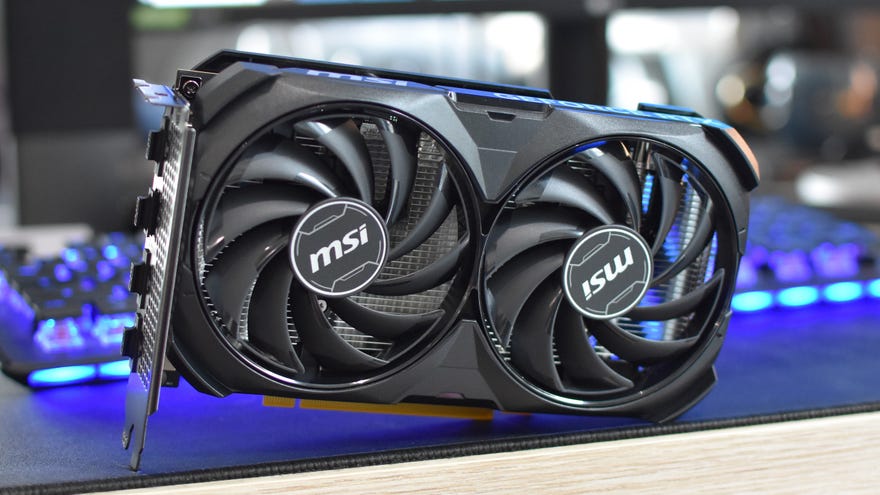Nvidia GeForce RTX 4060 review: the least underwhelming 1080p graphics card
Once again, DLSS and efficiency hoist a so-so Nvidia GPU
For all the big-budget GeForce graphics cards, it’s the firmly mainstream XX60 models that must surely keep the lights on at Nvidia HQ. A glimpse at the current Steam hardware survey reveals that the RTX 3060, RTX 2060, and GTX 1060 are all within the top four most-used GPUs – with the RTX 3060’s laptop version at number five. These are important cards, and messing up the next one would be a disaster.
The RTX 4060 is not a disaster. Ultimately, it a very capable 1080p graphics card, a technical upgrade on the RTX 3060, and (unlike several other RTX 40 series GPUs) arrives at a reasonable price. But it probably doesn’t deserve the apparent immortality of its predecessors, with only modest gen-on-gen performance gains and a heavy reliance on DLSS (including DLSS 3) to expand that difference.
It can feel as it it’s coasting its way to sub-£300 desirability, especially since the broadly similar AMD Radeon RX 7600 does so little to seriously compete. And that’s not even when it’s actively taking steps backward: there’s been a 12GB RTX 3060 for yonks. Why is the RTX 4060 limited to 8GB?
At least it doesn’t pull an RTX 4080 and jack up the price. One of the stronger points in the RTX 4060’s favour is that it’s barely more expensive than the two-year-old RTX 3060; a cheap version, like the MSI GeForce RTX 4060 Ventus 2X Black we’re looking at here, is £290 / $299. That’s actually less than what the RTX 3060 launched for, and a lack of major price drops means both it and even the RTX 3060 Ti are hovering at similar prices today. If you can’t quite budget for an RTX 4060 Ti, its little brother already looks like a deal.
Even so, it’s missing a certain sense of awe that the previous XX60 cards had, the kind that made you feel like you’d quietly nabbed the best-value GPU in the whole Nvidia stack. The RTX 4060 is alright, but rarely more than that.
Nvidia GeForce RTX 4060 review: 1440p performance
In its defence, I don’t agree with the sentiment that this GPU should have been the RTX 4050. For one thing, it carries on the grand old XX60 card tradition of being mostly okay at 1440p, just not to the point of hitting 60fps with max quality in every single game.
To repeat myself from the RX 7600 review, the RTX 4060 is generally the better mid-range GPU of the two, should you be in the market for a cheapish engine for your Quad HD gaming monitor. While they’re often next-and-neck, the RTX 4060 pulls far enough ahead in Forza Horizon 5 and Hitman 3 that average performance lands in Nvidia’s favour.
It’s better than the RX 7600 for ray tracing, too. In Cyberpunk 2077, adding Psycho RT effects to the Ultra preset sank the RX 7600 from 53fps to just 5fps; the same settings had the RTX 4060 falling from 47fps to 20fps, which still isn’t playable, but does demonstrate how its Ada Lovelace architecture and dedicated RT cores make a difference.
In fact, of these two GPUs, Psycho-quality Cyberpunk 2077 is only playable on the RTX 4060 when maintaining a sharp-looking 1440p. That’s because the RX 7600 can only call on FSR 2.1 upscaling, which nudged it up to a still-unviable 24fps on Quality mode. Conversely, the RTX 4060 has access to DLSS, which not only looks nicer on its own Quality mode, but bumped that 20fps up to a just-about-tolerable 36fps. Then, it can call upon DLSS 3 and its AI frame generation, which delivered a final, almost comically superior average of 57fps.
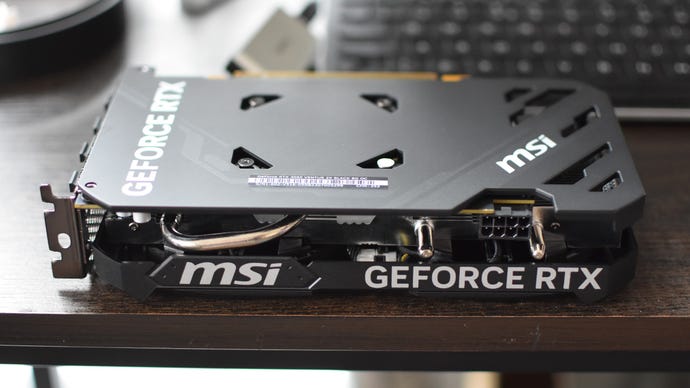
DLSS 3 remains light on supported games, but the list is growing, and the enormous performance improvements it can bring are extra-valuable when your GPU’s 'core' power might struggle to get by on its own. The RX 7600 can’t do this. The RTX 3060 can’t do this. The RTX 4060 can, and is currently the cheapest possible route into giving your PC DLSS 3 compatibility.
All the same, the RTX 4060’s native performance shouldn’t amaze anyone. Its only truly impressive advances on the RTX 3060 come in Assassin’s Creed Valhalla and Hitman 3, the latter already running nice and quick anyway. Its failure to take greater steps forward is also highlighted by how often the £225 Intel Arc A750 comes close to matching its performance, even exceeding it (by a single frame) in Metro Exodus.
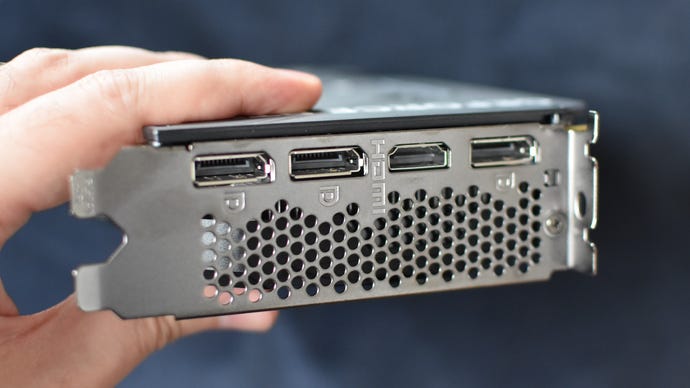
At least at this resolution, the RTX 4060 also stakes the weakest of claims as a cheaper RTX 4060 Ti alternative. Outside of a surprisingly close call in Hitman 3, and maybe Assassin’s Creed Valhalla, the Ti version sits well ahead.
Nvidia GeForce RTX 4060 review: 1080p performance
Down on the RTX 4060’s home turf, 1080p, it instantly becomes more appealing. The gap between it and the RTX 4060 Ti narrows to the point where, with I suspect a touch of bottlenecking, it catches up entirely in Final Fantasy XV. It generally scores bigger, better leads over the Arc A750 than at 1440p, too.
The fact that most of the RTX 4060’s results end up above 100fps shows that, all complaining aside, it is clearly a good option for Full HD. And that’s with DLSS playing more of a bit part than it would at higher resolutions, as upscaling to 1920x1080 tends to be more ugly than it’s worth.
DLSS is still preferable to FSR, mind, and we’ve started to see games – like Remnant II and Redfall – that, intentionally or otherwise, need upscaling to run effectively. The RTX 4060’s advantage in this arena therefore can't be discounted entirely. Particularly when it still allows for DLSS 3’s frame generation to run without any upscaling at all, adding performance while maintaining the crispness of native-res rendering.
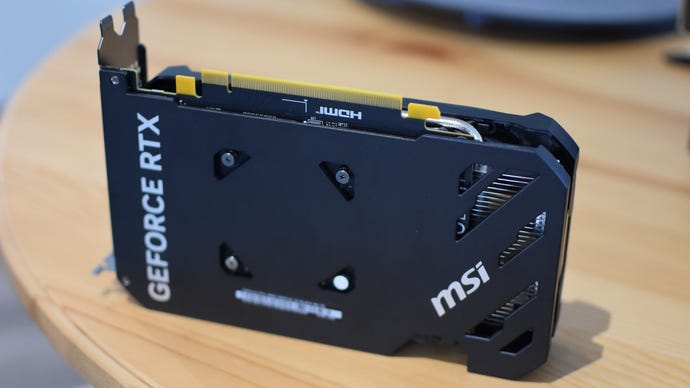
Case in point, I could run Cyberpunk 2077 with Ultra quality and a full set of Psycho ray tracing effects at a comfortable 55fps with frame generation switched on. This was a hefty improvement on the 32fps these settings produced without it, so the RTX 4060 evidently has value to those who don’t need the highest monitor resolutions but do want to dabble with ultra-luxe quality settings.
As at 1440p, the RTX 4060 also trounces the RX 7600 for ray tracing in general. In Metro Exodus, adding Ultra-quality RT effects to the Ultra preset forced the RTX 4060 down from 77fps to 60fps – an easier ride than the RX 7600’s, which dropped from 79fps to 53fps. Cyberpunk 2077 also tanked a far less severe performance hit on RTX hardware, next to the RX 7600:
These are good results for the RTX 4060, but it’s still hard not to wish that they could have been better. On average, I count this GPU only about 31% faster than the RTX 3060, and that’s heavily skewed by a single barnstormer in Assassin’s Creed Valhalla. Moment-to-moment performance differences will only be slightly felt, for the most part, and if your monitor’s refresh rate only goes up to 60Hz, they might not be visible at all. DLSS 3 games are the exception but, again, there are only so many.
Despite being cheaper at launch, then, you couldn’t call the RTX 4060 an especially smart upgrade for RTX 3060 owners. For someone currently on an RTX 2060 or RTX 3050, sure, though don’t expect the usual dose of XX60 magic. Not when the best single reason to buy one is a souped-up upscaler.
That said, the RTX 4060 does have one more quality going for it, and it’s one that’s gained new importance since 2023 electricity bills went the way of 2021 graphics cards. This GPU is fantastically efficient, with maximum rated power draw down from 170W on the RTX 3060 to just 115W. Outside of a one-off peak of 126W during my in-game testing, the RTX 4060 would indeed stay between 111W and 113W, making its performance-per-watt far more standout than its simple FPS averages. This represents another win over the RX 7600, too: I recorded AMD's card using between 161W and 163W while running games. This MSI-designed RTX 4060 also ran a few degrees cooler, varying between 69°c and 74°c under load; the RX 7600 reference card I tested stayed steady at 76°c.
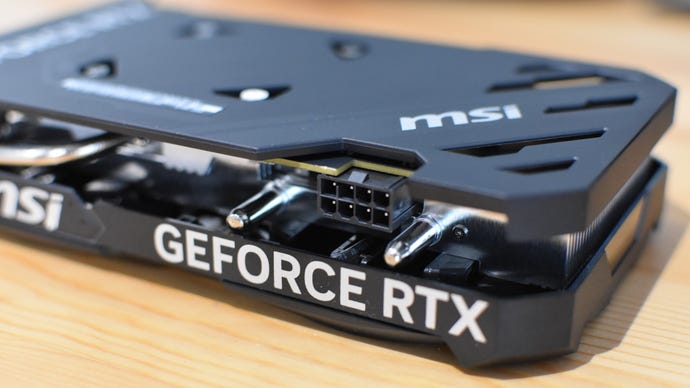
Individual successes, like efficiency and DLSS 3, do a lot of heavy lifting for the RTX 4060. If it’s accompanied by the crunching sound of core performance having a long snooze on its laurels, these side-benefits serve as a reminder that the Nvidia’s cheapest mid-ranger can still be a meaningful evolution on the RTX 3060. Just perhaps not in the ways that everyone will want, or appreciate.
I, for one, would still recommend this GPU to most prospective builders of mid-range PCs, provided they’re sticking to 1080p and/or don’t already have a good 30-series card lying around. But it would be a grudging endorsement, delivered due to to a lack of credible alternatives as much as the RTX 4060’s own merits.
This review is based on a retail unit purchased by the author.
